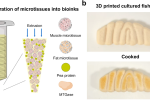
Review: mClassic RGB Range - Colour Us Unimpressed With These Upscalers
www.nintendolife.com
Image: Ollie Reynolds / Nintendo LifeWith the Nintendo Switch 2 on the horizon, you might be wondering why a company like Marseille has decided to expand upon its original mClassic dongle with two new variations. Alas, thats exactly what its done, releasing the new mClassic Switch (blue) and mClassic Retro (green) products to complement the red original.On this page: Review: mClassic RGB Range - Colour Us Unimpressed With These UpscalersSubscribe to Nintendo Life on YouTube796kWatch on YouTube When we looked at the red version back in 2021, we noted that its effects on visuals were unfortunately too subtle to warrant a full recommendation and that there were many scenarios in which the improvements simply weren't noticeable. The same cant really be said for the new products, with each processing mode implementing a drastically different image on-screen, but sadly the difference particularly when it comes to colours and brightness is actually a significant downgrade over what the Switch is capable of outputting on its own.Looking at the dongles themselves, all three are exactly the same in terms of build and presentation (bar the difference in colour, of course). This means that the new blue and green models, like the original, come with a Micro USB slot instead of USB-C. Its something that we could have almost brushed off when we looked at the original nearly four years ago, but for something releasing in 2025, Micro USB simply isnt acceptable. We go hands-on with the Marseille mClassicThat said, each device comes with its own red power cable which, if youve got a standard USB slot in your TV, monitor, or nearby wall, can easily be hooked up without the need for additional cables.In addition, if youre using these things with the Switch specifically, Marseille has also supplied a short HDMI adapter, since plugging the mClassic directly into the back of the Switch dock simply isnt possible thanks to the limited space available. Adding the adapter allows the mClassic to sit just outside the dock, which also makes it easier to toggle the three processing modes via a small switch on the side.mClassic RGB - What's the Difference?Now, lets take a closer look at what each of these dongles actually domClassic Original (Red)mClassic Original ModesMode 1 (Unprocessed), Mode 2 (Switch), Mode 3 (Retro)The red mClassic Original dongle is capable of upscaling the 720p / 60fps and 1080p / 60fps signals from the Switch up to a maximum of 1440p. The results are certainly visible just with the second of its three processing modes implementing some subtle sharpening and anti-aliasing in addition to the basic upscaling. The last mode, on the other hand, is designed primarily for retro gaming, and forces a 4:3 aspect ratio.We've laid things out in the below images from Sid Meier's Civilization VII. The left image is mode 1 (unprocessed), middle is mode 2 (Switch) and right is mode 3 (Retro).Mode 1 (Left), Mode 2 (Middle), and Mode 3 (right) - click on the images to view each at full resolution Images: Nintendo LifeMode 2 does smooth out the rough edges somewhat with some anti-aliasing and depth-of-field processing in addition to upscaling at 1440p, but it's an incredibly subtle effect that's really only discernible when viewed side-by-side with mode 1. It also slightly boosts the overall saturation of the colours, and while this isn't particularly egregious in this instance (unlike the blue model more on that later), it's nevertheless a slight downgrade from the unprocessed mode.Mode 3, of course, implements the 4:3 aspect ratio for retro games, but also includes everything from mode 2, including the upscaling, smoothing, and depth-of-field processing. Regardless of which mode you select, gameplay lag is thankfully at an absolute minimum, and we didn't notice anything worth highlighting.Out of all three mClassic devices, the original is one that we could almost make a case for if you're looking for something to boost visual clarity on your Switch or retro consoles. The improvements provided are minimal, to be sure, but it's definitely there. If you're not keen on upgrading to the Switch 2 when it launches this year, this might actually be a sound way to future-proof your current Switch for another couple of years or so. Close-up crops of the mClassic Red - Mode 1 (left) is unprocessed, Mode 2 (right) is upscaled and enhanced Images: Nintendo LifemClassic Switch (Blue)mClassic Switch ModesMode 1 (Switch OG), Mode 2 (Switch Enhance), Mode 3 (Switch Enhance+)The new mClassic Switch essentially takes Mode 2 from the mClassic original and pushes things even further, with enhancements theoretically designed to improve your experience on the Switch specifically. Mode 1 on the blue dongle is the exact same as mode 2 on the red, implementing 1440p upscaling, anti-aliasing, minor colour saturation, and the rest of it. Modes 2 and 3 add in colour filters that are meant to boost immersion of games depending on their colour and lighting, with mode 2 designed primarily for lighter games, and mode 3 for darker.The problem is that neither mode looks even remotely good. Mode 2 goes overboard with the colour saturation, intending to replicate the look of the Switch OLED on the big screen, but instead resulting in an image that looks completely overblown. Blacks are much deeper, and even white levels are muted, turn them into a more muddy, grey colour. We understand the intention to use this on brighter, more vibrant games, but even those can have darker moments, and it's here where you get unprecedented loss in detail thanks to the darker colours.Mode 3 is the opposite. You've still got an increase in colour saturation here, but the overall brightness has been dialled up and the actual hue of the colours looks completely different. It's a bit closer to the output from Mode 1 and therefore not quite as offensive as Mode 2, but it still doesn't look very good.The filters provided by modes 2 and 3 are, frankly, just not very nice to look at. Given that mode 1 on the mClassic Switch is the same as mode 2 on the mClassic original, you'd be better off just going for the latter and ditching those dreadful filters for an upscaled image that's more faithful to the native Switch display.Mode 1 (Left), Mode 2 (Middle), and Mode 3 (right) - note the loss in detail with Mario's moustache and the moon in the background Images: Nintendo LifemClassic Retro (Green)mClassic Retro ModesMode 1 (Retro OG), Mode 2 (Vintage Retro), Mode 3 (Vintage Retro+)Finally, the mClassic Retro looks to give you a more authentic take on older classics by applying more colour filters to the screen, just like its blue sibling. Here, mode 1 is the same as mode 3 on the red, offering up the same 1440p experience with the added 4:3 aspect ratio. The same can be said for modes 2 and 3; all of them apply the same processing capabilities.When you switch over to mode 2, however, a filter is applied that heavily desaturates the colours on-screen, theoretically giving you a more 'vintage' look to your game. This might be somewhat valid for certain games, but for most, the resulting image looks incredibly washed out and far too bright.Mode 3 isn't quite so bad and darkens the overall image slightly when compared to mode 2. It's still not as good as the original output, but it's not terrible.The important thing with the mClassic Retro, however, is that unless you have a modded retro console that supports HDMI right out the gate, you're going to need some sort of generic SD to HDMI adaptor in order to actually make this thing work at all. Marseille's marketing for the RGB range focuses quite a lot on the 'plug and play' aspect, but for the green Retro device at least, this simply isn't the case unless you're already in a position in which you can play old consoles on a modern TV.mClassic Retro - Mode 1 (Left), Mode 2 (Middle), and Mode 3 (right) - we were unable to hook up an old console for this test, so we've used Killer Instinct on the SNES NSO app, hence the more squished image Images: Nintendo LifeThough technical specifications for the upcoming Switch 2 have yet to be officially confirmed, it's said to boast native 1080p resolution with added DLSS upscaling. Given the timing, it's tough to know exactly who these mClassic devices are for; especially at 99 for the red and 78 each for the blue and green.We struggled to recommend the mClassic Original back in 2021, and that was with the assumption that Nintendo itself was about to coast another handful of years without the previously rumoured 'Switch Pro'. We know that the Switch 2 is coming later this year, so if you're someone who's eyeing one up on day one, the mClassic isn't a sound purchase in 2025. And retro enthusiasts looking to get the best from their old consoles won't be satisfied with the results, either.mClassic RGB Range - The VerdictIf for some reason you're dead set on getting one of the mClassic devices, then the red Original is probably best. But even that isn't a recommendation given the asking price and the incredibly subtle differences between the three modes available. Then again, 1440p output with minor image sharpening isn't to be sniffed at.As for the 'new' Switch blue and Retro green, you're best off avoiding these entirely. Mode 1 on both devices can be found on the mClassic original, offering up exactly the same processing capabilities. The only extras you're getting are some genuinely awful colour filters that do nothing but distort the original output. It doesn't look good - quite the opposite.The mClassic Original does improve visual quality, albeit minimallyRelatively easy to set up and switch between modesColour filters on mClassic Switch and Retro are truly awfulUsing the mClassic Retro with classic consoles requires another third-party adaptor anywayA fairly pricey way to make your games look worse in most modesMicro USB? Really?Bad 3/10The samples for this review were provided by Marseille.Please note that some external links on this page are affiliate links, which means if you click them and make a purchase we may receive a small percentage of the sale. Please read our FTC Disclosure for more information.See AlsoShare:01 Nintendo Lifes resident horror fanatic, when hes not knee-deep in Resident Evil and Silent Hill lore, Ollie likes to dive into a good horror book while nursing a lovely cup of tea. He also enjoys long walks and listens to everything from TOOL to Chuck Berry. Hold on there, you need to login to post a comment...Related ArticlesNintendo Is Discontinuing Gold Points, One Of The Switch's Best IncentivesNoooo, don't do it!Toby Fox Shares Development Update On Deltarune Chapter 3 And 4"Still console testing"Funko Fusion Is Deemed A "Complete Commercial And Critical Failure"Around 20 unconfirmed layoffs reportedHands On: Xenoblade Chronicles X: Definitive Edition - A Decade On, Mira's Still Got ItA Skell of a good time
0 Commenti
·0 condivisioni
·43 Views











